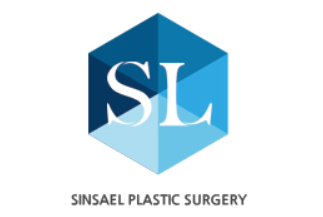Eyelid Laxity in Korea, Seoul, Gangnam
SINSA L Plastic Surgery
Eye-Specialized Care & Cost Guide
At a Glance
- What it is: Looseness of the eyelid (often the lower lid) from tendon/ligament laxity and skin–muscle aging
- How it looks/feels: Down-turned outer corners, round eye, scleral show (white under the iris), tearing/dryness, “pulled” look when smiling
- Best fixes: Canthopexy/canthoplasty, lateral tarsal strip (LTS), lower-lid retractor recession, spacer grafts (for retraction), and targeted lower bleph + fat repositioning when bags coexist
- Fly-in stay: Usually 7–10 days in Seoul for stitch removal & early checks
Why Korea — and Why an Eye-Specialized Clinic?
1) High-volume periorbital expertise
Korean surgeons perform large numbers of lower-lid support procedures, refining canthal tightening and fat-preserving techniques that maintain natural shape.
2) Whole-unit diagnostics
An eye-specialized team measures MRD2, canthal tilt, snap-back/distraction tests (lid tone), and midface support. They fix the cause (tendon laxity) rather than only chasing bags or skin.
3) Structure-preserving planning
Support is added with canthopexy/LTS while volume is repositioned (not over-removed). This avoids round eye, ectropion, and hollowness.
4) Traveler-friendly care
Clear English consults, photo reviews, printed aftercare, itinerary-aware scheduling (stitch-out ~day 5–7 when external incisions are used).
5) Value without shortcuts
Surgeon-led care, hospital-grade protocols, meticulous scar placement—at competitive pricing versus many global hubs.
What Is Eyelid Laxity (and Why It Matters)?
With age—and after some surgeries—the lateral canthus (outer corner) and lower-lid tendons loosen. The lid sags outward/downward, causing:
- Scleral show or retraction
- Watering eyes (poor lid–eye contact) or dryness
- Corner rounding and a tired appearance
- Exaggerated eye bags + groove if support is weak
Left untreated, standard “eye bag” surgery can worsen shape. Support first (or at the same time) is key.
Who Is a Good Candidate?
- Pull-down of the lower lid when smiling; corner looks rounded or down-tilted
- Tearing, irritation, or feeling the lid doesn’t hug the eye
- Visible white under the iris (scleral show) or prior surgery with new rounding
- Planning lower blepharoplasty and want to protect shape
Treatment Menu (Customized Plan)
Lid Support & Corner Stabilization
- Canthopexy (supporting stitch): Subtle lift/stability for mild laxity; often paired with transconjunctival lower bleph.
- Lateral Canthoplasty (reshaping): Releases and repositions the corner; used when angle/length truly needs change.
- Lateral Tarsal Strip (LTS): Gold-standard tightening for moderate–severe laxity; can be combined with canthoplasty.
Addressing Retraction / Severe Tightness
- Lower-Lid Retractor Recession: Releases tight pullers so the lid can rise.
- Spacer Grafts (hard-palate mucosa / cartilage / dermis-fat): Add vertical height in cicatricial or severe cases.
Combine When Needed
- Lower Blepharoplasty + Fat Repositioning / Septal Reset: Smooths bags/groove while support protects shape.
- Midface/SOOF Support: Elevates the lid–cheek junction when midface descent contributes.
- Skin-Pinch / Subciliary Skin Handling: For crepey excess (with careful support to avoid over-tightening).
Non-surgical options (PRP, RF, lasers) help skin quality but do not fix laxity. Support procedures do.
Cost Estimates (Guide)
Final fees depend on laxity severity, chosen method(s), and revision status. Ranges typically include surgeon + facility + anesthesia (KRW).
- Canthopexy (mild support): ₩0.8M–₩1.5M
- Lateral Canthoplasty (corner reshaping): ₩1.5M–₩3.0M
- Lateral Tarsal Strip (LTS): ₩1.0M–₩2.0M
- Lower-Lid Retractor Recession: ₩2.0M–₩4.0M
- Spacer Graft (when required): ₩3.0M–₩6.0M
- Lower Bleph + Fat Repositioning (if bags): ₩1.8M–₩4.8M (approach-dependent)
- Revision / Complex Laxity: ₩4.0M–₩8.0M
Example Scenarios
- A. Mild laxity + bags, good skin: Transconjunctival lower bleph + canthopexy → ~₩2.6M–₩4.8M
- B. Moderate laxity + groove + crepey skin: Subciliary lower bleph + fat repositioning + LTS → ~₩3.5M–₩6.2M
- C. Retraction after prior surgery: Retractor recession + spacer graft + LTS → ~₩5.0M–₩9.0M (scope-dependent)
Travel Timeline (Typical)
- Day 0: Outpatient surgery (45–120 min)
- Days 1–3: Peak swelling/tightness; head elevated; cool compresses
- Day 5–7: Stitch removal (if external incision)
- Day 7–10: Socially presentable; light makeup after clearance
- Weeks 3–8: Shape refines; 3–6 months for final contour
How to Get a Personal Estimate (Fast)
Send (email or upload):
- Photos: front, 45°, side—neutral & gentle smile (bright, even light)
- Symptoms: tearing, dryness, scleral show, prior surgeries/fillers (what/when)
- Your priority: shape protection with or without bag removal
- Travel window and downtime preference
You’ll receive a custom plan (support method ± bleph), a clear fee range, and a 7–10 day recovery calendar matched to your trip.
FAQs
Can I just remove the bags without support?
If laxity exists, removing bags
without support risks
round eye or retraction. We add
canthopexy/LTS as needed.
Will there be visible scars?
Incisions are small and placed at the corner or under lashes;
transconjunctival work leaves no external scar.
Will my eyes look smaller?
Proper support
restores natural shape and lid position; we avoid over-tightening and preserve volume.
Does laser fix laxity?
Lasers improve
skin texture only. Tendon laxity needs
surgical support.

